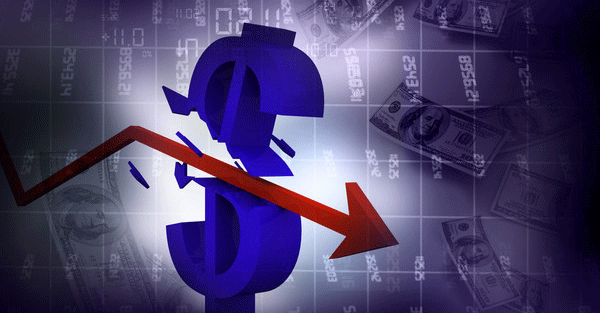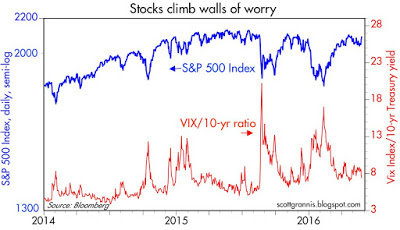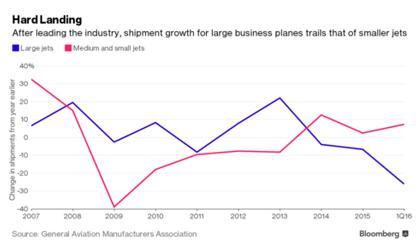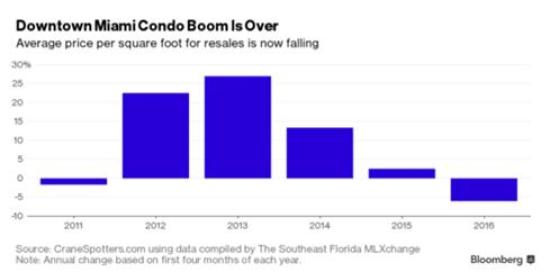Asset protection
 Last week the Wall Street Journal reported:
Last week the Wall Street Journal reported:
After a long hiatus, George Soros has returned to trading, lured by opportunities to profit from what he sees as coming economic troubles. Worried about the outlook for the global economy and concerned that large market shifts may be at hand, the billionaire hedge-fund founder and philanthropist recently directed a series of big, bearish investments, according to people close to the matter.
related:
George Soros isn’t the only one – Big Names Bailing

 The list of heavy hitters who are saying bad things about this world and its financial markets — while acting aggressively on their pessimism — is growing to alarming proportions. A few examples:
The list of heavy hitters who are saying bad things about this world and its financial markets — while acting aggressively on their pessimism — is growing to alarming proportions. A few examples:
Stan Druckenmiller: The bull market is exhausted; move to gold
(MineWeb) – Legendary investor Stan Druckenmiller, founder of Duquesne Capital Management LLC, told the Sohn Investment Conference in New York last week that he is bullish on gold and bearish on the stock market. Gold, he told the conference, “is our largest currency allocation.”
Druckenmiller recommended that investors sell their equity holdings. “The bull market is exhausting itself,” he told the conference. A major factor has been the Federal Reserve’s easy money policy, which has resulted in “reckless” corporate behavior.
Growing corporate debt is increasingly used for financial engineering, rather than in R&D that could lead to productivity improvements, Druckenmiller said. According to him, from 2012 to 2015, use of debt for U.S. nonfinancial firms for stock buybacks and M&A increased from $1.25 trillion to $2 trillion, while debt for R&D and office equipment grew from $1.55 trillion to only $1.8 trillion.
“The corporate sector today is stuck in a vicious cycle of earnings management, questionable allocation of capital, low productivity, declining margins and growing indebtedness,” Druckenmiller added.
The slowing Chinese economy as another reason to sell equities, according to Druckenmiller. He believes that stimulus measures by China have “aggravated the overcapacity in the economy.” While he had hope two years ago that the Chinese were willing to accept the tradeoff of a slowdown to gain reform, the Chinese “have opted for another investment-focused fiscal stimulus, which may buy them some time but will exacerbate their problem. They do not need more debt and more houses.”
Instead, Druckenmiller has made a move to gold. “It has traded for 5,000 years and for the first time has a positive carry in many parts of the globe as bankers are now experimenting with the absurd notion of negative interest rates,” he said. “Some regard it as a metal, we regard it as a currency, and it remains our largest currency allocation,” he added. Among his investments are holdings in the SPDR Gold Trust.
A Bearish George Soros Is Trading Again
(Fox Business) – Worried about the outlook for the global economy and concerned that large market shifts may be at hand, the billionaire hedge-fund founder and philanthropist recently directed a series of big, bearish investments, according to people close to the matter.
Soros Fund Management LLC, which manages $30 billion for Mr. Soros and his family, sold stocks and bought gold and shares of gold miners, anticipating weakness in various markets. Investors view gold as a haven during times of turmoil.
Mr. Soros’s recent hands-on approach reflects a gloomier outlook than many. His worldview darkened over the past six months as economic and political issues in China, Europe and elsewhere have become more intractable. While the U.S. stock market has inched back toward records after troubles early this year and Chinese markets have stabilized, Mr. Soros said he remains skeptical of the Chinese economy, which is slowing.
The fallout from any unwinding of Chinese investments likely will have global implications, Mr. Soros said.
“China continues to suffer from capital flight and has been depleting its foreign currency reserves while other Asian countries have been accumulating foreign currency,” Mr. Soros said in an email. “China is facing internal conflict within its political leadership, and over the coming year this will complicate its ability to deal with financial issues.”
Mr. Soros also argues that there remains a good chance the European Union will collapse under the weight of the migration crisis, continuing challenges in Greece and a potential exit by the United Kingdom from the EU.
“If Britain leaves, it could unleash a general exodus, and the disintegration of the European Union will become practically unavoidable, ” he said. Still, Mr. Soros said recent strength in the British pound is a sign that a vote to exit the EU is less likely.
Mr. Soros’s bearish firm bought over 19 million shares of Barrick Gold Corp. in the first quarter, according to securities filings, making it the firm’s largest stockholding at the end of the quarter. That position has gained more than $90 million since the end of the first quarter. Soros Fund Management also bought a million shares of miner Silver Wheaton Corp. in the first quarter, a position that has increased 28% so far in the second quarter.
The last time Mr. Soros became closely involved in his firm’s trading: 2007, when he became worried about housing and placed bearish wagers over two years that netted more than $1 billion of gains.
If the Markets Crash Then Carl Icahn Could Win Big
(Barrons) – If financial markets crash, one of the biggest beneficiaries could be billionaire investor Carl Icahn.
An investment fund run by the 80-year-old Icahn had a net short position of 149% at the end of the first quarter. Icahn is considerably more bearish than he was at the end of 2015, when the fund’s net short position was 25%. A year ago, the fund had a net long position of 4%. It’s rare to see a fund outside a dedicated short fund with such a large bearish stance.
Asked about the big bearish stance, Icahn Enterprises CEO Keith Cozza said on the conference call that “Carl has been very vocal in recent weeks in the media” about his negative views. “We’re much more concerned about the market going down 20% than we are it going up 20%. And so the significant weighting to the short side reflects that.” Icahn was not on the call.
The Sam Zell Indicator – Time to Get Out of Real Estate?
(Value Walk) – Talk about exquisite timing.
Even today, a decade after the fact, the leveraged buyout of Equity Office Properties Trust remains one of the largest of all time: $36 billion for nearly 600 office buildings in New York, Washington D.C. and dozens of the nation’s largest cities.
But in late 2006, some wondered if the billionaire who sold the REIT was being a little rash. After all, the real estate boom was in full swing, and the S&P 500 was primed to hit new all-time highs. “Is he cashing out too early?” asked a Bloomberg headline when the deal was announced.
We all know the answer, of course.
Billionaire Sam Zell deftly sidestepped the coming real estate carnage. Then, with prices at generational lows a few years later, Zell bought hundreds of apartment complexes at dirt-cheap prices.
And today? Well, that’s the ominous part…
Once again, Zell is selling his real estate holdings. Last fall, he unloaded a quarter of his portfolio, buildings totaling about 23,000 rental apartments, to Starwood Capital Group for more than $5 billion.
Zell next sold off apartment buildings in South Florida and Denver, with complexes in Phoenix, Boston and other metro areas expected to be sold before the year is out.
“No one has ever accused me of not being a realist,” Zell told CNBC’s talking heads recently.
Of course for every seller there has to be a buyer, so to the extent that these guys are bearish, an equal amount of optimistic capital disagrees with their assessment. Still, between Soros, Druckenmiller, Icahn and Zell there’s about a thousand years of successful, audacious experience, so at a minimum their sudden bearishness should be a comfort to smaller players who have reached the same conclusion.
The fact that they see gold as the antidote to crashing financial markets is also reassuring for long-suffering gold bugs.
If these and the several other big names now saying scary things (see Bill Gross’s supernova comments) are right, the short stocks/long gold trade is finally about to pay off.

 ‘The biggest subprime bubble of all is the negative interest loans being made to sovereign governments.
‘The biggest subprime bubble of all is the negative interest loans being made to sovereign governments.
All over the world now there are governments that are issuing sovereign bonds with negative yields… and many of these governments are totally bankrupt”
On July 1, 2005, the Chairman of then President George W. Bush’s Council of Economic Advisors told a reporter from CNBC that,
“We’ve never had a decline in house prices on a nationwide basis. So, what I think is more likely is that house prices will slow, maybe stabilize, might slow consumption spending a bit. I don’t think it’s gonna drive the economy too far from its full employment path, though.”
His name was Ben Bernanke. And within a year he would become Chairman of the Federal Reserve.
Of course, we now know that he was dead wrong.
The housing market crashed and dragged the US economy with it. And Bernanke spent his entire tenure as Fed chairman dealing with the consequences.
One of the chief culprits of this debacle was the collapse of the sub-prime bubble.
Banks had spent years making sweetheart home loans to just about anyone who wanted to borrow, including high risk ‘sub-prime’ borrowers who were often insolvent and had little prospect of honoring the terms of the loan.
When the bubble got into full swing, lending practices were so out of control that banks routinely offered no-money-down mortgages to subprime borrowers.
The deals got even sweeter, with banks making 102% and even 105% loans.
In other words, they would loan the entire purchase price of a home plus closing costs, and then kick in a little bit extra for the borrower to put in his/her pocket.
So basically these subprime home buyers were getting paid to borrow money.
Of course, we know how that all turned out. By 2008 the entire system crashed, and the post-game analysis had some pretty obvious conclusions:
Bad things tend to happen when you pay people to borrow money, especially when they’re not particularly creditworthy.
Thank goodness no one in finance engages in such risky behavior anymore!
Or do they?
Today, subprime is back.
There’s been a lot of talk lately about a growing bubble in the subprime auto loan market, and even student loans.
But the biggest subprime bubble of all is the negative interest loans being made to sovereign governments.
All over the world now there are governments that are issuing sovereign bonds with negative yields… and many of these governments are totally bankrupt.
Japan, with its debt level at more than 220% of GDP, is the latest entrant into the world of negative interest bonds.
Japan’s debt is so high, in fact, that it takes 41% of government tax revenue to service.
Even in Italy, one of Europe’s most notoriously and hopelessly bankrupt countries, the government bonds have negative yields.
‘Negative yield’ means that an investor who loans money to government will get back less money than s/he invested once the bond matures.
In other words, the government is getting paid to borrow money.
So it’s not much different than when banks paid subprime homeowners to borrow money ten years ago based on a misguided premise that home prices always go up.
Now they’re just paying subprime governments to borrow based on a misguided premise that governments will ALWAYS pay. (Just like Greece!)
The key difference is size. At the peak of the housing bubble ten years ago, there was about $1.3 trillion worth of subprime mortgages in the financial system.
That $1.3 trillion bubble was enough to bring down several major banks and cause cascading damage across the global financial system.
Today’s bubble is EIGHT TIMES the size of the last one, with more than $10.4 trillion worth of government bonds that yield negative interest.
And what’s even more concerning is how quickly it’s growing.
In January 2016, the total amount of government bonds in the world with negative interest totaled $5.5 trillion.
One month later in February the total had grown to $7 trillion. By May it was $9.9 trillion. And today it’s $10.4 trillion.
So this gigantic sovereign bond bubble where governments are being paid to borrow money has practically doubled just in the last several months.
This isn’t a cause for panic or to assume that the financial system is going to crash tomorrow.
But it’s clearly a disturbing trend… the proverbial powder keg in search of a match.
And when future pundits write the history of the financial crisis to come, whether it happens today, tomorrow, or years from now, you can bet they’ll wonder how the entire system failed once again to see something so dangerous… and so obvious.
Simon Black
Founder, SovereignMan.com
related:
John Mauldin’s take on how to handle the situation described above: Your Portfolio Design: Assume the Fetal Position

 The S&P 500 is only 2% away from making a new, all-time high, and its PE ratio today of 19.3 (according to Bloomberg) is about 15% above its 55-yr average. The Fed has been taking extraordinary measures to ensure that the economy has plenty of liquidity, and has targeted extremely low short-term interest rates for over 7 years. Taking these facts into consideration, you could be forgiven for thinking that super-easy monetary policy and low interest rates have created another bubble in the price of risk assets.
The S&P 500 is only 2% away from making a new, all-time high, and its PE ratio today of 19.3 (according to Bloomberg) is about 15% above its 55-yr average. The Fed has been taking extraordinary measures to ensure that the economy has plenty of liquidity, and has targeted extremely low short-term interest rates for over 7 years. Taking these facts into consideration, you could be forgiven for thinking that super-easy monetary policy and low interest rates have created another bubble in the price of risk assets.
There is no shortage of pundits, economists, and investors who are worried that the Fed has blown an asset-price bubble that is ready to pop. I’m among the minority who have been arguing—for many years—that this is the wrong way to look at things. I don’t see the Fed as the aggressor; I think the Fed is more a follower. The Fed hasn’t driven yields to absurdly low levels, the Fed has merely responded to a market that has been deeply risk averse and generally pessimistic
…go here for more analysis and 14 more informative charts
also:
The Seeds Of War Are Everywhere
Larry Edelson say’s it’s a topic that no one likes to talk about. Yet I’ve studied the history and cycles of war in detail, and I do not like what I see happening now in the least bit.

One of the defining traits of the past few years’ “recovery” has been the torrent of money flowing from big banks to favored clients, and from there into trophy properties like high-end real estate, superyachts, and fine art. This might be the first financial bubble to completely bypass the 99%.
And now it’s ending. Falling oil prices and negative interest rates (rich people own a lot of government bonds) seem to have sucked the animal spirits out of the 1%, leading to stories like this:
A Worrisome Pileup of $100 Million Homes
(New York Times) – One of the latest symbols of the overinflated luxury housing market is a pink mansion perched above the Mediterranean on the French Riviera.
The 13,000-square-foot property, built and owned by the fashion magnate Pierre Cardin, is composed of giant terra cotta orbs arranged in a sprawling hive. The home’s name befits its price. “Le Palais Bulles,” or “the Bubble Palace,” is being offered for sale at approximately $450 million.The listing is part of a global pileup of homes listed for $100 million or more. A record 27 properties with nine-figure prices are officially for sale, according to Christie’s International Real Estate. That is up from 19 last year and about a dozen in 2014.
If you add in high-priced “whisper listings” that are offered privately, brokers say the actual number of nine-figure listings worldwide could easily top 40 or 50.
“It’s a bumper crop,” said Dan Conn, chief executive of Christie’s International Real Estate. “It’s just a new world in terms of what people are building and offering for sale.”
The rise in nine-figure real estate listings comes just as sales of luxury real estate have cooled. Many say the sudden surge in hyperprice homes — often built and sold by speculative investors — is the ultimate bubble signal.
“When you have a record number of homes for sale at a price point of $100 million or more, that tells you these homes aren’t selling,” said Jonathan Miller, president of Miller Samuel Inc., a real estate appraisal and research firm. “It’s not as deep a market as some might hope.”
Still more nine-figure homes are on the way. Real estate agents and developers say a home under construction in Bel Air is likely to have more than 50,000 square feet of living space, with finishes rivaling a superyacht’s. The price will be yacht-like, too, at around $300 million. Among the home’s amenities: the world’s largest safe.
And this…
Trophy Corporate Jets Were All the Rage, Until They Weren’t
(Bloomberg) – The private jet Janine Iannarelli is selling for a Russian client has leather seats, wood paneling, a satellite phone and can fly nonstop from Tokyo to Los Angeles. The price has dropped $3 million since September and is still falling.
Iannarelli today is hawking the 10-year-old Bombardier Global 5000 for $14.5 million but recommends that her client cut the price further as the market for large-cabin business jets keeps weakening. A new Global 5000 lists for $50.4 million.
“There’s absolutely no evidence of a recovery on the horizon,” says Iannarelli, founder of Houston-based aircraft brokerage Par Avion Ltd. “None of the jet models has hit bottom.”Rarely seen bargains abound for big corporate aircraft as tumbling oil wealth, a stronger dollar and a downturn for emerging-market giants from Brazil to Russia cripple demand. As owners from foreign tycoons to Archer-Daniel-Midlands Co. try to sell their planes, Bombardier Inc., General Dynamics Corp.’s Gulfstream unit and other planemakers are cutting output and chopping list prices to cope with a glut of new and used business jets.
Former Prize
The slump extends even to the Gulfstream G650 — just two years ago an aircraft so coveted by well-heeled buyers that some would pay $10 million above list for a used jet rather than wait four years for a new model. Now there are 19 G650s for sale, about 11 percent of the global fleet in operation. One 2013 plane that first was posted for sale in June at $68 million has had its asking price cut twice, to $58.8 million.“It’s probably one of the best times I’ve seen in my career to get the values for a big-cabin jet,” says Brian Foley, a business-aircraft consultant who spent 20 years as director of marketing for the North American jet unit of France’s Dassault Aviation SA.
Last but not least, Miami condos — the bank vaults of the Latin American elite — are looking a lot like 2007:
Miami’s Condo Frenzy Ends With Inventory Piling Up in New Towers
(Bloomberg) – Miami’s crop of new condo towers, built with big deposits from Latin American buyers and lots of marketing glitz, are opening with many owners heading for the exits.
A third of the units in some newly built high-rises are back on the market, though most are listed for more than their owners paid in the pre-construction phase. At the current sales pace, it would take 29 months to sell the 3,397 condominiums available in the downtown area, according to South Florida development tracker CraneSpotters.com.With the U.S. dollar strong, South American investors who piled into the downtown Miami market after the real estate crash are now trying to unload their recently built condos, adding inventory to an area where 8,000 units are under construction and nine towers were completed since the end of 2013. Some are offering homes at a loss as demand cools. Condo purchases from January through April slid 25 percent from a year earlier, while the average price fell 6 percent on a per-square-foot basis, CraneSpotters data show.
“The problem is that investors are no longer buying, and now they’re going to be looking to sell,” said Jack McCabe, a housing consultant based in Deerfield Beach, Florida. “And what buyers are going to replace those other than vulture buyers looking for deals?”
The strong rental market is giving many would-be sellers the opportunity to cover their costs. But there’s also a flood of new, professionally managed apartments under construction. And apartment vacancies in the downtown Miami area rose to 11.8 percent in the first quarter, double the rate two years earlier, according to property-data provider Reis Inc.
“The ticking time bomb is based on rental rates,” said Peter Zalewski, owner ofCraneSpotters. “When some of the foreign investors sitting on the sidelines have to dig into their pockets and subsidize renters, that’s the fuse that will lead to a correction.”
In a “modern” monetary regime, decision making — and the resulting spoils — are concentrated in a small group of insiders, so that’s where all the irrational exuberance lives. Which makes sense: How can you not be exuberant if you’re a corporate CEO making 500 times your workers’ pay, or if your family trust is invested in equities and bonds that are soaring because of QE.
But excess begets its opposite, and now the 1% is running scared as the realization dawns that no one is left to buy their trophies.
related: Victor notes the gold market had the highest trading volume ever as Gold dropped $40 last week. He answers Miks’s question if this something to be worried about or if it is a good buying spot. A Golden Opportunity














